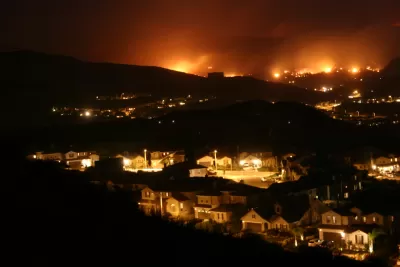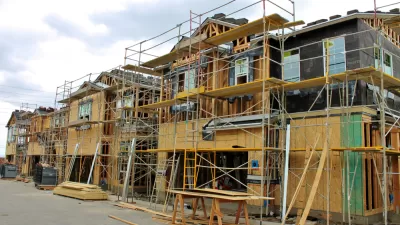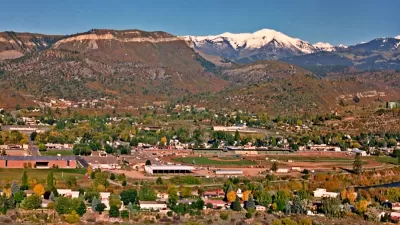As wildfires grow more destructive, how far should states go to protect homes located in high-risk areas?

"The California Department of Insurance last month released new regulations that require insurance companies to reward homeowners who take steps to protect their home from wildfire, such as clearing brush and trees from the immediate vicinity of their home or putting on a fire-resistant roof." But as wildfires become more frequent and destructive, writes Emma Marris, "to what extent should we cushion the blow of these dangers, and is there a limit to how much, or how long, we pay?"
Insurers are scrambling to figure out their strategy for the future as more destructive fires wipe out their earnings. "Insurance companies are prohibited by state law from using models of future conditions to set their rates, but with the fires of the past five or so years, even backwards-looking risk calculations are beginning to prompt insurers to raise rates or refuse to renew policies."
"In 32 states, rejected homeowners can always get coverage through programs known as FAIR plans—insurance pools run collectively by every company offering homeowner’s insurance in the state." Critics of FAIR plans say "These policies send an unrealistic message to homeowners about how much risk they are taking on."
But raising FAIR premiums could have a negative impact on low-income households, notes Marris. "If people are exposing themselves to risk simply because they want to, using insurance policy to make it expensive or impossible to do so sounds like a great idea. But when people are moving to risky areas out of necessity, the same policies could instead seem cruel."
Experts urge community-level, "collective hardening actions—cleaning up fuels that encircle whole neighborhoods, sending a free truck around to remove woody debris from yards, ensuring enough water is available for firefighters when they crack open a hydrant."
FULL STORY: People Deserve to Know Their Houses Are Going to Burn

Alabama: Trump Terminates Settlements for Black Communities Harmed By Raw Sewage
Trump deemed the landmark civil rights agreement “illegal DEI and environmental justice policy.”

Study: Maui’s Plan to Convert Vacation Rentals to Long-Term Housing Could Cause Nearly $1 Billion Economic Loss
The plan would reduce visitor accommodation by 25% resulting in 1,900 jobs lost.

Why Should We Subsidize Public Transportation?
Many public transit agencies face financial stress due to rising costs, declining fare revenue, and declining subsidies. Transit advocates must provide a strong business case for increasing public transit funding.

Wind Energy on the Rise Despite Federal Policy Reversal
The Trump administration is revoking federal support for renewable energy, but demand for new projects continues unabated.

Passengers Flock to Caltrain After Electrification
The new electric trains are running faster and more reliably, leading to strong ridership growth on the Bay Area rail system.

Texas Churches Rally Behind ‘Yes in God’s Back Yard’ Legislation
Religious leaders want the state to reduce zoning regulations to streamline leasing church-owned land to housing developers.
Urban Design for Planners 1: Software Tools
This six-course series explores essential urban design concepts using open source software and equips planners with the tools they need to participate fully in the urban design process.
Planning for Universal Design
Learn the tools for implementing Universal Design in planning regulations.
Caltrans
Smith Gee Studio
Institute for Housing and Urban Development Studies (IHS)
City of Grandview
Harvard GSD Executive Education
Toledo-Lucas County Plan Commissions
Salt Lake City
NYU Wagner Graduate School of Public Service





























